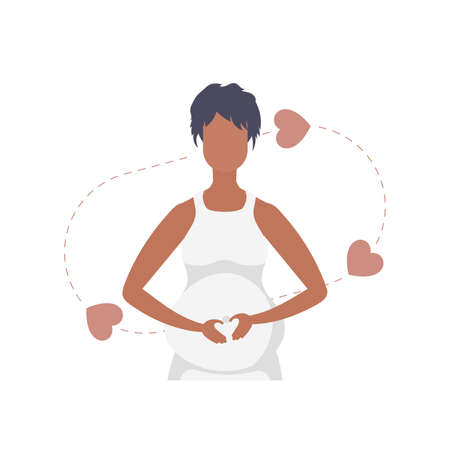Introduction to Home Rehab Modifications
Adapting our homes to meet changing needs is a thoughtful step towards ensuring comfort, safety, and continued independence—values cherished in households across the UK. Whether it’s due to ageing, injury, or long-term health conditions, home rehabilitation modifications can make all the difference in daily living. In Britain’s often older housing stock and unique local communities, these changes are not just practical—they’re essential for maintaining dignity and quality of life. By considering the best approach for modifying your home, you can create a space that supports both physical wellbeing and emotional security, allowing you or your loved ones to thrive within familiar surroundings.
Understanding DIY Home Modifications
When considering whether to undertake home rehabilitation modifications yourself, it’s important to first understand what DIY (Do It Yourself) truly involves within the context of the UK. Many individuals and families opt for this route due to its perceived affordability and flexibility, but there are several factors to weigh carefully before starting.
Common Types of DIY Home Rehab Modifications
DIY modifications can vary widely, from simple adjustments such as installing grab rails or anti-slip mats to more complex projects like fitting ramps or adapting bathrooms for improved accessibility. Here’s a quick overview of typical DIY tasks:
| Type of Modification | Description | Skill Level |
|---|---|---|
| Grab Rails & Handrails | Attaching rails in hallways, bathrooms, or by stairs to aid mobility | Basic |
| Ramps | Installing temporary or semi-permanent ramps for wheelchair access at entrances | Intermediate |
| Bathroom Adaptations | Adding shower seats, non-slip flooring, or lever taps for easier use | Intermediate to Advanced |
| Door Widening (Non-structural) | Using offset hinges to increase doorway clearance without major construction work | Intermediate |
| Lighting Improvements | Fitting brighter bulbs or motion sensors for safer navigation at night | Basic |
Cost Considerations in the UK Context
The cost of DIY home modifications in the UK can be quite variable. While labour costs are generally eliminated, you’ll still need to purchase materials and possibly hire tools. Some local councils offer grants or VAT exemptions for adaptations designed for disabled individuals, which can help reduce expenses. However, mistakes made during DIY projects may result in additional costs if professional intervention becomes necessary later on.
Typical Costs Breakdown (Estimated)
| Modification Type | Average DIY Cost (£) |
|---|---|
| Grab Rail Installation | £20–£50 per rail (materials only) |
| Temporary Ramp Setup | £60–£200 depending on size and material |
| Basic Bathroom Adaptation (e.g. shower seat) | £30–£100 per item |
| Offset Door Hinges | £10–£25 per hinge set |
Availability of Resources and Support in the UK
The UK offers a wealth of resources for those considering DIY modifications. National charities such as Age UK and Disabled Living Foundation provide online guides and advice. Local authorities may offer tool libraries or community workshops, while hardware stores often run free instructional sessions. However, always remember that certain adaptations—especially those involving electrical work or structural changes—require certification by a qualified tradesperson under UK law.
A Gentle Reminder: Know Your Limits
Tackling home modifications yourself can be empowering, but it’s essential to assess your own skills honestly and seek support when needed. Taking time to plan carefully will help ensure your home remains both safe and comfortable throughout life’s changes.

3. Pros and Cons of DIY Modifications
Taking on home rehab modifications yourself can be an appealing option for many, especially if you enjoy hands-on work or want to maintain a sense of independence in your own space. British homes, often featuring unique layouts and period features, may inspire homeowners to tailor solutions that truly fit their needs. Let’s gently explore the advantages and disadvantages of the DIY approach, keeping in mind the quirks of UK living.
Advantages of DIY Home Modifications
Cost Savings: One of the most significant benefits is saving money on labour costs. By sourcing materials locally—from high street retailers or community builders’ merchants—you can often keep expenses down.
Personalisation: DIY allows you to adapt modifications to your specific needs, whether that means installing grab rails in just the right spot or choosing finishes that match your décor.
Flexible Timing: You’re free to complete projects at your own pace, which is especially helpful if you have fluctuating energy levels or family commitments common in British households.
Disadvantages of DIY Home Modifications
Lack of Professional Expertise: Some adaptations, such as fitting stairlifts or altering bathrooms for accessibility, require specialist skills. Mistakes could compromise safety or even devalue your home.
Time and Energy Demands: Even minor projects can take longer than expected, particularly in older properties where hidden challenges often arise.
Potential for Stress: Balancing a project with daily life—especially if you are caring for a loved one—can be overwhelming without support.
A Gentle Word on Safety
If you are considering tackling modifications yourself, it’s wise to consult with local authorities or occupational therapists before beginning. Many councils across the UK offer guidance or grants for home adaptations—sometimes a blend of DIY and professional help offers the best balance for comfort and peace of mind.
In Summary
The DIY route can bring personal satisfaction and cost savings but does require careful consideration, especially in British homes with their particular characteristics. Weighing these pros and cons thoughtfully will help ensure your home remains both safe and welcoming as needs change.
Professional Home Modification Services
When considering home rehabilitation modifications, opting for professional services can offer peace of mind, safety, and expert guidance. In the UK, a range of professional resources is available to support individuals and families in adapting their homes to better meet changing mobility or health needs. Here’s an overview of the key services and how they may be able to help:
Overview of Key Professional Services
| Service | Description | How They Help |
|---|---|---|
| Occupational Therapists (OTs) | Registered healthcare professionals who assess individuals’ needs and recommend suitable home adaptations. | OTs provide personalised advice, ensure modifications are safe and functional, and can assist with applications for funding or grants. |
| Builders & Specialist Contractors | Professionals experienced in home adaptations such as ramps, accessible bathrooms, widened doorways, and more. | They carry out the practical work with attention to building regulations and quality standards specific to the UK. |
| Council Support Schemes | Local authorities often offer schemes such as Disabled Facilities Grants (DFG) to help fund necessary adaptations. | Councils can provide financial assistance, access to recommended contractors, and help with planning permissions where required. |
How These Services Work Together
The process typically begins with an assessment by an occupational therapist, who identifies what changes are needed. Following this assessment, you may engage builders or specialist contractors to carry out the work. Your local council may also play a role in funding or approving larger projects. This collaborative approach helps ensure that modifications meet both your personal needs and legal standards.
Benefits of Using Professional Services in the UK Context
- Expertise: Professionals bring experience with British building codes and disability access standards.
- Safety: Proper installation reduces risk of accidents or costly errors.
- Support: Guidance through grant applications or regulatory processes can make adaptations more affordable and less stressful.
- Long-Term Peace of Mind: Well-planned modifications are more likely to remain suitable as needs evolve over time.
If you are feeling uncertain about where to start or worried about making mistakes, remember that these services exist not only to modify your home but also to support you through each step of the journey. Whether it’s understanding eligibility for local authority support or finding trustworthy tradespeople, seeking professional advice can offer gentle reassurance as you adapt your living space for comfort and independence.
5. Pros and Cons of Professional Services
Choosing professional assistance for home rehabilitation modifications is a significant decision, especially when comfort, safety, and long-term wellbeing are at stake. In the UK, there are many reputable occupational therapists, contractors, and specialist companies who understand the unique needs of older adults or people living with disabilities. Here, we gently explore both the advantages and potential drawbacks of turning to professionals for your home adaptations.
Benefits of Professional Help
Expert Knowledge and Compliance
Professional services bring invaluable expertise to your project. British contractors specialising in accessible home modifications are well-versed in local building regulations and health & safety standards. This means adaptations—such as wet rooms, ramps, or stairlifts—are not only installed correctly but also meet all legal requirements. This peace of mind can be particularly reassuring for families navigating complex needs.
Tailored Solutions
Every home is different, and so are each person’s requirements. Professionals typically offer a personalised assessment and design service, ensuring that solutions are not just functional but enhance quality of life. From choosing non-slip flooring suitable for the UK’s rainy climate to recommending subtle grab rails that blend with existing décor, professional input ensures every detail is considered.
Time-Saving and Less Stressful
Entrusting your project to experienced hands often saves time and reduces stress. Professionals coordinate tradespeople, manage unforeseen issues, and handle paperwork such as planning permissions—a particular benefit for those unfamiliar with the process or without the energy to oversee it themselves.
Potential Drawbacks of Going Professional
Cost Considerations
One of the main concerns is cost. Professional services can be expensive, especially if custom work is required or if your local council support is limited. While some grants exist (such as Disabled Facilities Grants), these may not cover all expenses. It’s important to seek clear quotes and explore funding options early on.
Less Personal Control
Another consideration is that hiring professionals may leave you feeling less involved in decision-making or design details. Some people find it difficult to relinquish control over their own space; clear communication and a collaborative approach can help mitigate this.
A Gentle Word of Encouragement
Ultimately, whether you choose professional help depends on your personal situation, budget, and confidence levels. Many UK families find comfort in knowing their loved one’s home has been adapted by skilled hands—but remember, your voice matters throughout the process. A compassionate partnership between homeowner and professional often yields the best results.
6. Key Factors to Consider
When deciding between undertaking DIY home rehabilitation modifications or hiring professional help, it’s essential to thoughtfully evaluate several important factors that directly impact your safety, comfort, and quality of life. Here are some key points to guide your decision-making process:
Personal Needs and Abilities
Begin by reflecting on your own physical abilities, health conditions, and the specific requirements you have for daily living. If you or your loved one requires tailored adaptations, such as wheelchair access or specialist bathroom equipment, consider whether these needs can be safely met with a DIY approach or if they demand professional expertise.
Budget Considerations
Your available budget will naturally influence your choice. While DIY modifications may seem more cost-effective upfront, it’s important to factor in the potential for hidden costs—such as tools, materials, and possible repairs if things don’t go to plan. Professional services may appear more expensive initially but often include warranties and expert knowledge that could save money over time.
Safety First
Home adaptations should always prioritise safety above all else. Some modifications—like installing grab rails or accessible showers—must meet strict UK safety regulations. Professionals are typically well-versed in these standards, ensuring compliance and reducing risks of accidents or injury. If you’re confident in your skills and the task is straightforward, a DIY project might suffice; however, don’t hesitate to consult an expert if there’s any doubt.
Long-Term Wellbeing
Think beyond immediate needs: how will the modification affect your independence and wellbeing in the long run? Professional installers often provide solutions designed for longevity and adaptability as needs change with age or health conditions. A quick DIY fix might work temporarily but could require frequent adjustments later on.
Seeking Advice
If you’re uncertain about the best route, consider reaching out to local councils, occupational therapists, or charitable organisations specialising in home adaptations for guidance. They can help assess your situation holistically and recommend suitable options tailored to your circumstances.
Making the Right Choice
Ultimately, the decision between DIY and professional modifications is deeply personal. By carefully weighing your needs, financial situation, safety requirements, and long-term goals, you’ll be better equipped to create a supportive home environment that promotes comfort and independence for years to come.
7. Conclusion and Helpful UK Resources
Choosing between DIY and professional home rehabilitation modifications is a significant decision that can affect comfort, safety, and independence at home. Each route offers its own advantages and potential drawbacks, from cost considerations to ensuring quality and compliance with UK standards. Remember, whatever path you choose, the goal is to create a living space that supports your or your loved one’s needs in the most respectful and effective way possible.
If you are considering making changes to your home, it’s reassuring to know that you don’t have to navigate this journey alone. There are many trusted UK organisations and resources available to help guide you through every step:
Trusted UK Organisations
- Age UK: Offers advice on home adaptations for older people, including local services and funding options. Visit Age UK
- Disabled Living Foundation (DLF): Provides impartial advice on daily living equipment and home adaptations. Explore DLF
- Care & Repair England: Supports older people in making their homes safe and suitable for their needs. Learn more here
Support from Local Councils
Your local council may offer grants, such as Disabled Facilities Grants (DFG), or provide assessments by occupational therapists to recommend the most appropriate modifications. Contacting your local authority is a practical first step for tailored advice.
Advice Lines and Further Support
- NHS 111: For non-emergency health advice related to home safety or adaptations.
- Shelter: For housing rights information and support. Visit Shelter
- Citizens Advice: Offers guidance on grants, legal rights, and practical steps for home modifications. Contact Citizens Advice
A Gentle Reminder
No matter where you are on your journey—whether exploring DIY projects or seeking professional assistance—reaching out for guidance can make all the difference. Take things one step at a time, and know that support is always available in the UK to help create a safer, more comfortable home environment for everyone.


